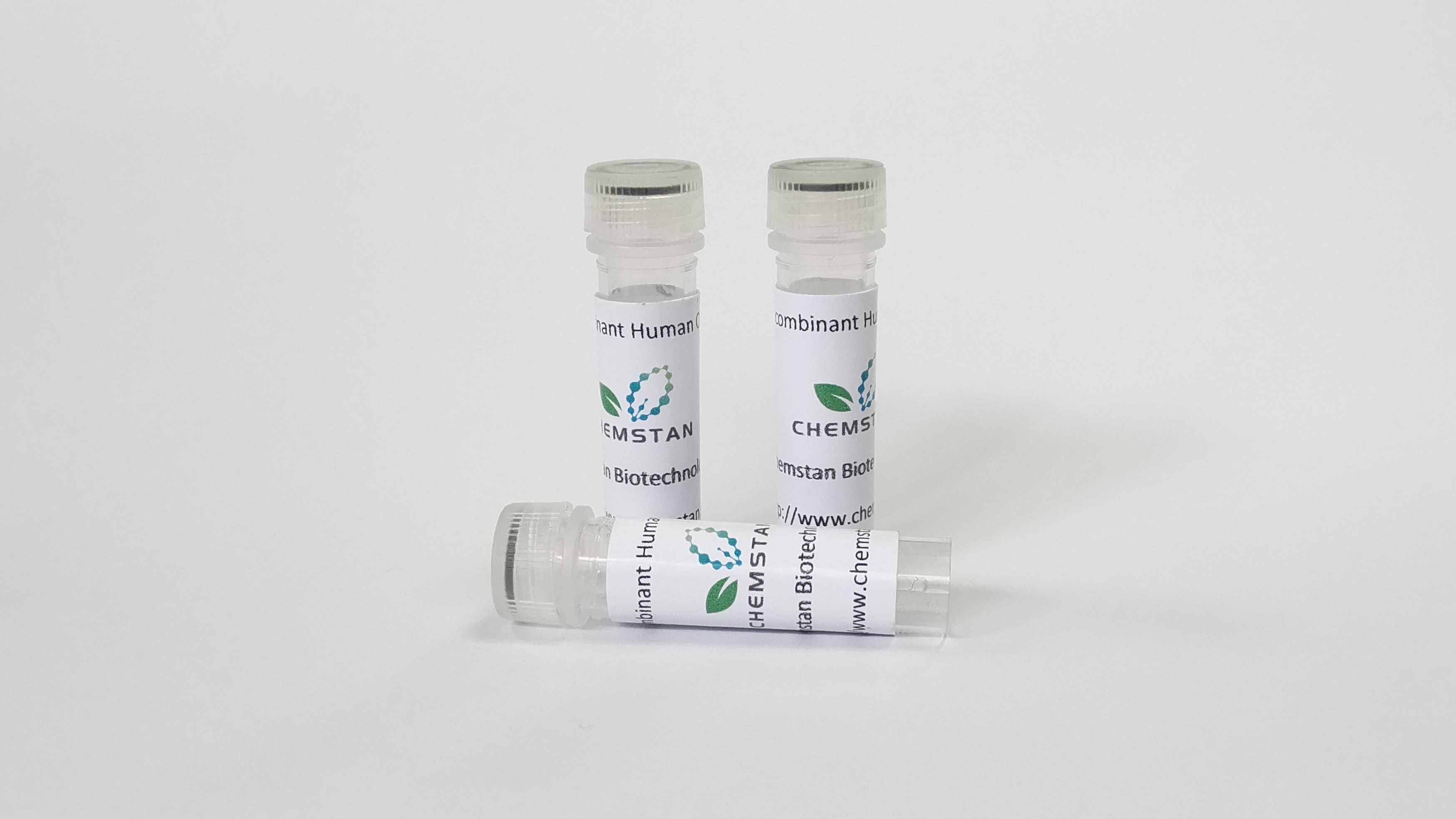
浏览量: 362
- 产品名称: RANTES/CCL5 蛋白, Mouse (HEK293, Fc)
- 产品货号: CS18289
- 货期: 现货
- 价格与订购: 1800
- 数量:
库存: 10
- 规格: 20ug
- 产品信息
- 如何订购
产品描述
RANTES/CCL5 蛋白, Mouse (HEK293, Fc) 是 CC 趋化因子家族中的关键促炎趋化因子,可以与 CCR1、CCR3、CCR4 和 CCR5相互作用,介导炎症免疫反应、病毒感染以及肿瘤发生等。RANTES/CCL5 蛋白, Mouse (HEK293, Fc) 是一种由 HEK293 表达的重组小鼠 RANTES/CCL5(S24-S91) 蛋白,N 端带有 hFc 标签。
研究背景
CCL5,也称为RANTES(正常T细胞激活、表达和分泌的调节),属于趋化因子CC亚家族。CCL5基因位于人类17号染色体q11.2-q12区域,编码CCL5一种分子量为8 kDa的蛋白质。CCL5可由T细胞、单核细胞、NK细胞、上皮细胞、成纤维细胞表达,CCL5可与受体CCR1、CCR3、CCR4和CCR5结合,其中与CCR5的亲和力最高[1]。CCL5 与 CCR5 结合导致磷脂酰肌醇 3 激酶 ( PI3K ) 磷酸化,磷酸化的 PI3K 进一步酸化丝氨酸 473 上的蛋白激酶 B,Akt/PKB 复合物磷酸化并灭活丝氨酸/苏氨酸蛋白激酶 GSK-3。同时,CCL5 与 CCR5 结合诱导 Bcl2 蛋白表达,从而促进细胞凋亡。CCL5 还可以充当 G 蛋白偶联受体 GPR75 的潜在激动剂,GPR75 与 GPR75 一起可能通过激活涉及 PI3、Akt 和 MAP 激酶的下游信号通路在神经元存活中发挥作用,并在胰腺的胰岛素分泌中发挥作用。通过激活 GPR75[2] 胰岛细胞。除了充当趋化剂外,CCL5 也是 CD8+ T 细胞产生的主要 HIV 抑制因子。它参与炎症维持、移植、抗病毒免疫、肿瘤发展以及许多人类疾病和病症,例如病毒性肝炎或 COVID-19[3]。
种属
Mouse
表达系统
HEK293
标签
N-hFc
蛋白编号
P30882 (S24-S91)
基因 ID
20304 [NCBI]
同用名
MuRantes; SIS-delta; Scya5; Ccl5; D17S136E; eoCP; RANTES; SCYA5; SISd; TCP228; CCL5
氨基酸序列
SPYGSDTTPC CFAYLSLALP RAHVKEYFYT SSKCSNLAVV FVTRRNRQVC ANPEKKWVQE Y I NYLEMS
分子量
40-45 kDa
纯度
Greater than 95% as determined by Tris-Bis PAGE.
性状
无菌粉末
组分
Lyophilized from a 0.22 μm filtered solution of PBS, pH 7.4. Normally 8% trehalose is added as protectant before lyophilization.
内毒素含量
<1 EU/μg, determined by LAL method.
复溶方法
It is not recommended to reconstitute to a concentration less than 100 μg/mL in ddH2O.
保存条件 & 期限
Stored at -20°C for 2 years. After reconstitution, it is stable at 4°C for 1 week or -20°C for longer (with carrier protein). It is recommended to freeze aliquots at -20°C or -80°C for extended storage.
运输条件
Room temperature in continental US; may vary elsewhere.
参考文献
[1]. V Appay, et al. RANTES: a versatile and controversial chemokine. Trends Immunol. 2001 Feb;22(2):83-7.
[2]. Zhen Zeng, et al. CCL5/CCR5 axis in human diseases and related treatments. Genes Dis. 2022 Jan;9(1):12-27.
[3]. F Cocchi, et al. Identification of RANTES, MIP-1 alpha, and MIP-1 beta as the major HIV-suppressive factors produced by CD8+ T cells. Science. 1995 Dec 15;270(5243):1811-5.
[4]. Sara González-Rodríguez, et al. Hyperalgesic and hypoalgesic mechanisms evoked by the acute administration of CCL5 in mice. Brain Behav Immun. 2017 May;62:151-161.
Note
For research use only.

 地 址:
地 址: 产品销售:
产品销售: E - mail :
E - mail : 邮 编:
邮 编:
 Amily
Amily


